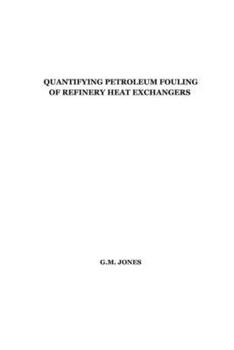Quantifying Petroleum Fouling of Refinery Heat Exchangers: PhD Thesis (1999)
Improvement to TEMA recommendations would provide engineers with greater confidence in the prediction of rates of fouling for various heat exchangers and heat exchanger types. This would allow heat exchangers to be designed to optimum specifications, resulting in enormous savings in capital and operating costs.
In this work, optical and acoustic scattering techniques have been used in the development of two new oil stability tests. Interpretation of the scattered signals yields information about the state of aggregation of the asphaltene within the oil sample. Since the aggregation of asphaltene is known to play a key role in the fouling of refinery heat exchanger equipment, these new test provide information which is valuable, both in the design and in the operation of refinery heat exchangers.
In addition, an investigation has been carried out in collaboration with a major international refiner into the use of artificial intelligence to model the fouling of process plant. Although the success of these models varied greatly, the better models were able to predict general trends in fouling rate.





